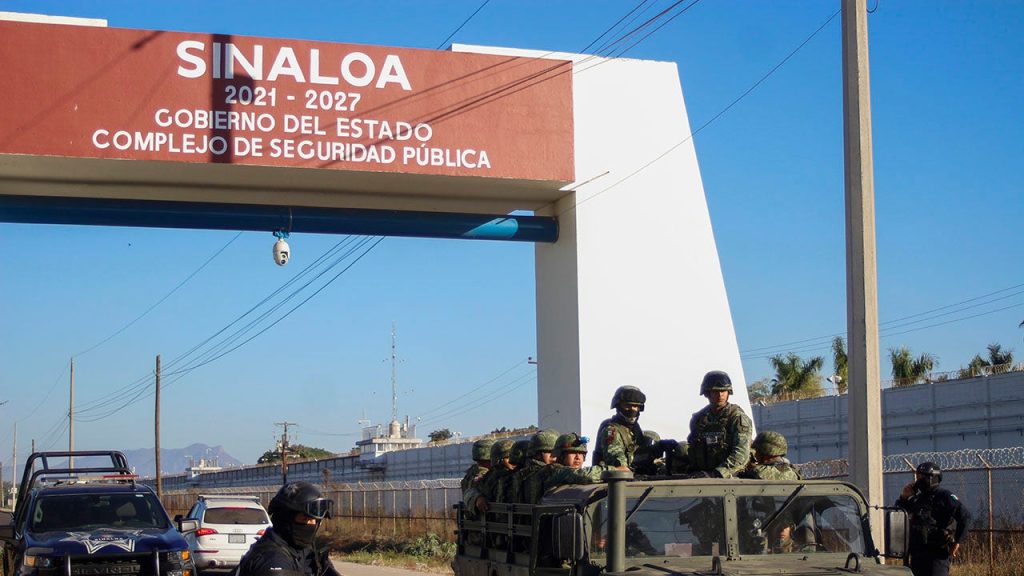On Tuesday, officials announced that the Mexican military made one of the largest seizures of fentanyl in the nation’s history, capturing over a ton of the powerful synthetic opioid during two coordinated raids. This significant operation unfolded shortly after a notable drop in fentanyl seizures in Mexico earlier this year, with authorities reporting minimal captures in recent months. The drug bust came against a backdrop of escalating tensions regarding trade and border security, particularly in light of President-elect Donald Trump’s recent threats to impose a 25% tariff on Mexican and Canadian goods. Trump has consistently linked tariffs to what he perceives as a failure of these countries to effectively combat illegal immigration and drug trafficking into the United States, emphasizing a broader strategy to exert pressure on neighboring nations to address these issues.
The successful raids took place in Sinaloa, a region notorious for being home to powerful drug cartels, including the infamous Sinaloa Cartel. During the operation, military personnel encountered two armed men who attempted to escape into two nearby homes. In one location, authorities discovered around 660 pounds of fentanyl, while an astounding 1,750 pounds of the drug was located in a truck outside the other residence. Additionally, several firearms were seized, and two suspects were arrested, marking a pivotal moment in the fight against drug trafficking in a state deeply entwined with the narcotics trade. Public Safety Secretary Omar Garcia Harfuch confirmed this monumental seizure via social media, stating, “In Sinaloa, we achieved the biggest seizure in history of fentanyl.”
The investigation leading to the significant seizure had been in progress for some time, according to Mexican President Claudia Sheinbaum, who highlighted the long-term efforts involved in bringing this case to fruition. The circumstances surrounding the operation raised questions about the methods used by authorities; the justification for entering the homes without a warrant was based on the mere observation of armed individuals, a tactic that has been employed in past operations. This incident sheds light on a concerning trend regarding the enforcement of drug laws in Mexico, especially as fentanyl seizures had notably declined earlier this year, with authorities managing to confiscate alarmingly small amounts throughout the summer months.
Fentanyl remains a critical issue in the relationship between the U.S. and Mexico due to its devastating impact on public health. Mexican drug cartels are known to produce this opioid using precursor chemicals sourced from China, subsequently smuggling it across the border into the United States. The drug has been linked to approximately 70,000 overdose deaths annually in the U.S., which has intensified calls for both Mexican and American authorities to increase their efforts to combat the flow of this dangerous substance. In response to the ongoing fentanyl crisis, Trump pressured Mexico to adopt stricter measures against drug trafficking and also suggested imposing an additional 10% tariff on China over its role in exporting fentanyl precursors.
The gravity of the fentanyl crisis has led to a heightened focus on key figures in the drug trade. Recently, the U.S. State Department announced an increase in the reward for Nemesio Oseguera Cervantes, known as “El Mencho,” who is the leader and co-founder of the Cartel de Jalisco Nueva Generación (CJNG). This cartel is recognized as one of the most violent drug trafficking organizations operating in Mexico, involved in the trafficking of fentanyl and various dangerous drugs into the United States. As the U.S. government raises the stakes on targeting major drug traffickers, this shift reflects the urgency needed to dismantle the networks perpetuating the opioid epidemic.
In light of the ongoing conversation around tariffs and trade, both President Sheinbaum and Canadian Prime Minister Justin Trudeau engaged in discussions with Trump regarding these economic measures. Both leaders emphasized the negative repercussions that tariffs could have on their respective economies. Sheinbaum described her conversation with Trump as “productive,” hinting at a potential collaboration to handle the pressing issues surrounding drug trafficking, while Trudeau voiced strong opposition, warning that such tariffs could devastate the Canadian economy. This dialogue illustrates the complexities of international relations, as trade policies become inherently linked to matters of security and public health.
In conclusion, the recent fentanyl seizure in Mexico underscores an ongoing struggle with drug trafficking that has implications for both U.S. and Mexican governments. The operation, which yielded a record amount of fentanyl, highlights the capacity of Mexican authorities to respond to heightened pressures amid a challenging drug landscape. However, it also raises questions about enforcement methods, the efficacy of current strategies, and the role that economic factors, such as tariffs and international diplomacy, play in shaping the approach to drug-related crime. As both nations continue to grapple with the opioid epidemic, it is evident that a multifaceted approach—combining law enforcement, policy response, and international cooperation—will be crucial to achieving substantive progress in combating drug trafficking and its devastating consequences.










